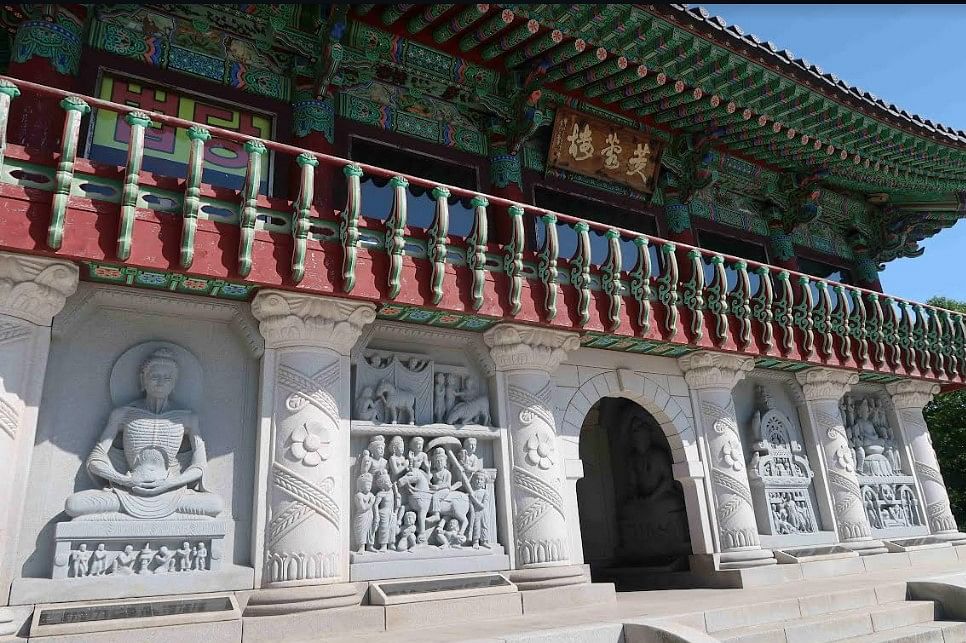
Beopseongpo is an important coastal tourist destination located in the South Jeolla province of South Korea. The spectacular hillside location of the Beopseongpo complex overlooking the Yellow Sea allows visitors to appreciate its importance in the spread of early Buddhism in the Korean peninsula.
The Jeolla region was once part of the ancient Baekje kingdom. Unlike the Goguryeo and Silla kingdoms, Baekje directly received Buddhism from India.
The Buddhist monk Marananta from ancient India landed in this harbour in 384 A.D. and introduced Pure Land Buddhism to the Baekje kingdom. He was received by the king, who constructed a temple for his use.
Marananta travelled from India to China using the northern land route of the Silk Roads before sailing to Korea.
This region was called Amupo after the Amitabha Buddha of Pure Land Buddhism in the Baekje period. Later it was renamed Beopseongpo, which signifies "the sacred port to which a holy man brought the Buddha's teachings."
A replica of the Ashoka pillar with a lion capital on the top dominates the front courtyard of this large open-air complex. A level below, accessed by stairs, a mandala shaped stone platform with a tree at its centre symbolizes its connection to the Buddhist universe.
In the rear part of the complex, after crossing two stone footprints of the Buddha, one can walk up the stairs to reach the Buyongru hall. The stone reliefs in the lower level of Buyongru hall depict the stories of Sakyamuni's life—starting from birth to the enlightenment.
The traditional Korean-style temple at the upper level of Buyongru houses the prayer hall. The prayer hall's interior has imposing elements typical of Korean Buddhist temples, such as colourful religious paintings and paper lanterns hanging from the ceiling. Outside structures are wood and decorated with dancheong patterns using vibrant colours.
Until recently, Marananta's birthplace was believed to be the Gandhara region of ancient India (currently in Pakistan). As a result, the pagoda garden and the souvenir shop were constructed in Takht-i-Bahi architectural style to relate to the Gandhara region. A small on-site museum called Gandhara Relic Hall displays a statue of venerable monk Marananta and several Gandhara-style stone sculptures depicting the life of Sakyamuni.
The recent work of Prof. Juhyung Rhi, an eminent scholar of Gandharan art, based at Seoul National University, rules out that Marananta was born in the Gandhara region. His detailed examination of the source materials leads to only ancient India without reliable sources suggesting the Gandhara region as his birthplace.
The museum's permanent exhibition also explains how Baekje influenced the transmission of Buddhism to Japan and its religious art.
(The author is a New York-based writer with a deep interest in Asian art, architecture and cultures of maritime and land Silk Roads)